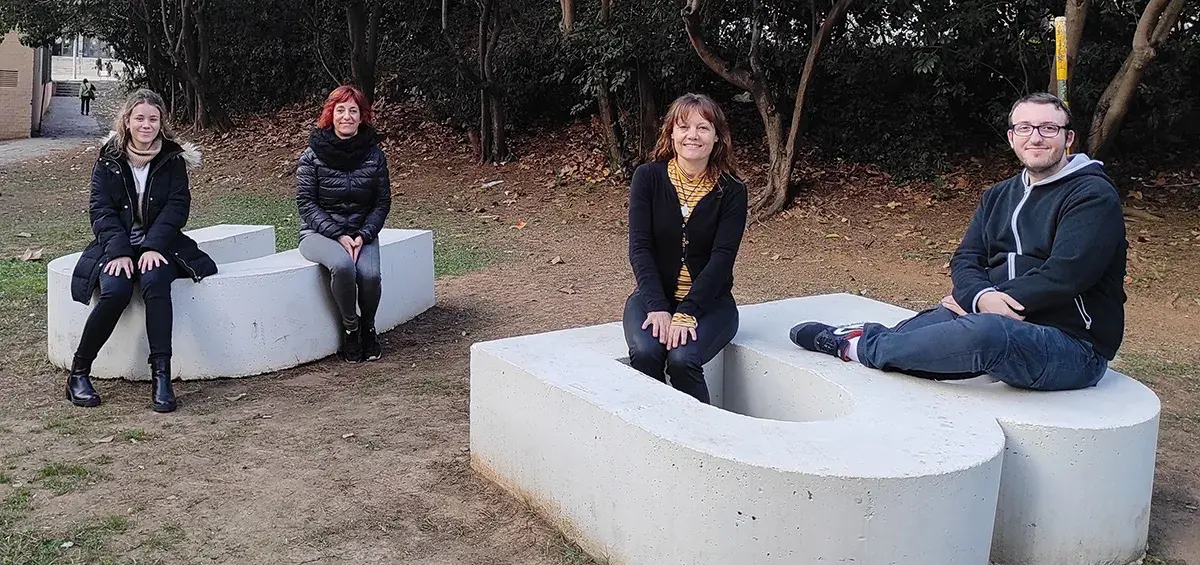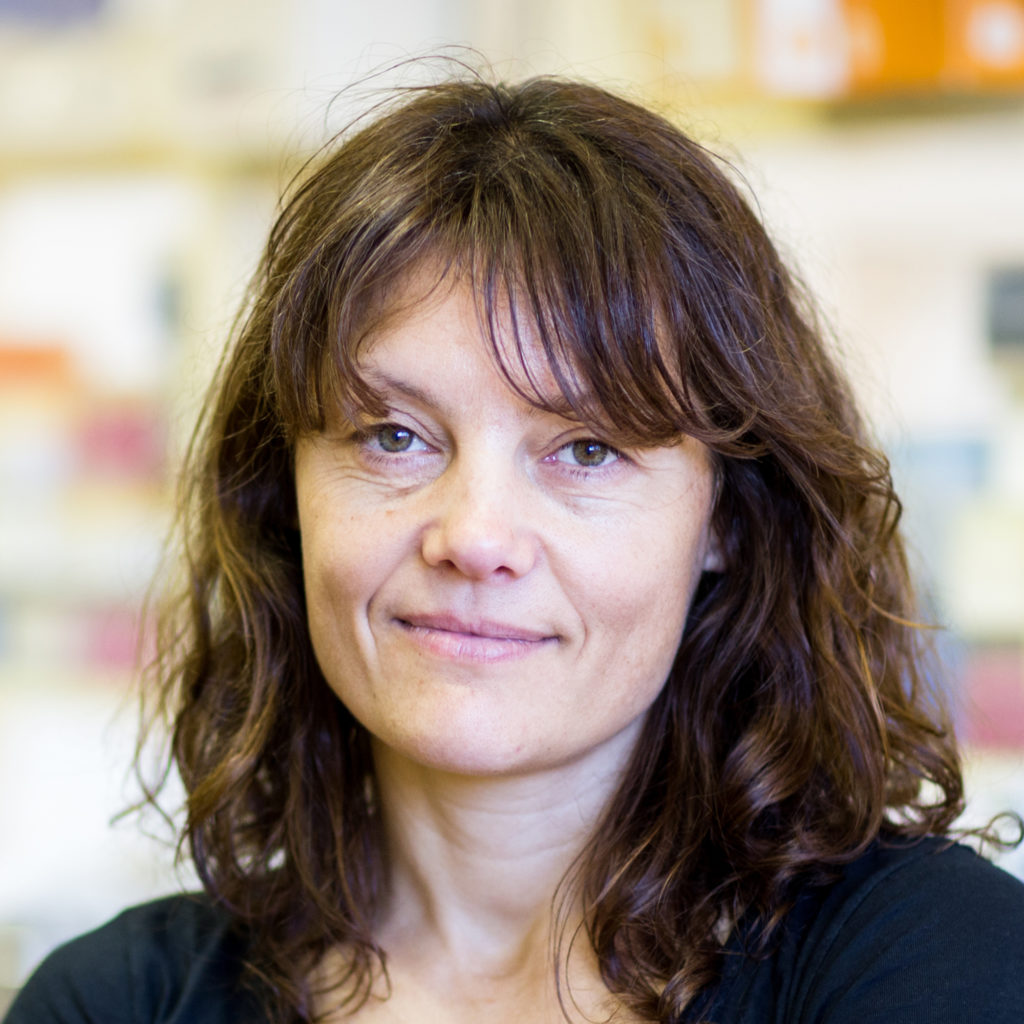PhD Valledor Group
Macrophages, LXR, Inflammation and Immune Response
PhD Annabel Valledor Fernández
Contact:
Annabel Valledor has a PhD in Biology and a Master Degree in Immunology from the University of Barcelona. She did a postdoctoral stay at the University of California, San Diego (La Jolla, California, USA). She then joined the Barcelona Science Park in 2004 as a Ramón y Cajal Researcher. Since 2007 she is Associate Professor at the University of Barcelona, where she leads the Nuclear Receptors and Immune Responses group. The group’s projects focus on investigating the biological functions of the nuclear receptors LXRs in different pathological contexts, including infection, cancer and metabolic diseases, with special emphasis on their possible therapeutic utility. The work carried out by our group in recent years has contributed to elucidating the effects of LXR activation on the tumor microenvironment and on the management of bacterial infection.

About Us
- Principal Investigators:
Annabel Valledor Fernández - Predoctoral Fellows:
Glaria Percaz
Estibaliz Font Díaz
Joan Letelier Torres
Nicole - Technical staff:
Margarita Garcia

What Do We Research?
The microenvironment that is generated within solid tumors is heterogeneous, made up of cancer cells, stromal cells, and different populations of cells of the immune system. Within the pool of tumor-infiltrating immune cells, tumor-associated macrophages are especially abundant and are present at all stages of tumor progression. In many types of tumors, the abundance of tumor macrophages is associated with a poorer prognosis. In most cases, tumor-associated macrophages exert functions that favor the survival and proliferation of cancer cells, the remodeling of the extracellular matrix, and angiogenesis, factors that benefit tumor growth and metastasis. In addition, tumor-associated macrophages play an immunosuppressive role within the tumor microenvironment, enabling cancer cells to escape the attack by the immune system.
LXRs are transcription factors of the nuclear receptor family, which are activated by endogenous agonists, including some oxidized forms of cholesterol (oxysterols) and some intermediate metabolites of cholesterol biosynthesis. There are also high-affinity synthetic agonists that are used in research. Two LXR subtypes have been described, NR1H3 (LXRα) and NR1H2 (LXRβ). LXRβ is ubiquitously expressed, whereas LXRα expression is more predominant in tissues with high metabolic activity. Within the immune system, macrophages, dendritic cells, and neutrophils express both isotypes, B lymphocytes primarily express LXRβ, and some populations of T lymphocytes express LXRβ or both isotypes.
LXRs form heterodimers with retinoid X receptors (RXRs) and bind to LXR response elements in the regulatory regions of their target genes. Once activated by agonists, LXR-RXR heterodimers induce the expression of a series of genes that code for proteins with key functions in lipid and glucose metabolism. In addition to their positive effects on gene transcription, LXRs can repress the expression of inflammatory mediators through different mechanisms, an aspect that confers anti-inflammatory activity in animal models.
Current studies in the laboratory are aimed at studying the possible role of RXR as a regulator of metabolism in different organs, especially the heart, liver and brain. In addition, we are interested in studying the role of RXR in the processes of macrophage differentiation and activation in different tissues, as well as its role in inflammatory diseases and cancer. One of the remaining issues of nuclear receptor biology is the identity of the endogenous RXR ligands. We recently identified the long-chain fatty acid C24:5 as a natural RXRa ligand that was greatly increased in abundance in response to hematopoietic stress. In addition, we also identified the maternal-milk w-6- FA g-linoleic acid as endogenous RXR ligand. Opening the question of whether differences in diet would regulate RXR signaling and the subsequent consequences on macrophage differentiation and function. We will further study the relevance on these ligands and the discovery of new endogenous ligands in different tissues.
Publications
-
Carbó JM, León TE, Font-Díaz J, De la Rosa JV, Castrillo A, Picard FR, Staudenraus D, Huber M, Cedó L, Escolà-Gil JC, Campos L, Bakiri L, Wagner EF, Caelles C, Stratmann T, Van Ginderachter JA, Valledor AFCancer Res. 2021 Feb 15;81(4):968-985.
-
Font-Díaz J, Jiménez-Panizo A, Caelles C, Vivanco MD, Pérez P, Aranda A, Estébanez-Perpiñá E, Castrillo A, Ricote M, Valledor AF.Semin Cancer Biol. 2021 Aug;73:58-75
-
Glaría E, Letelier NA, Valledor AFCurr Opin Pharmacol. 2020 Aug;53:55-65
-
Glaría E, Valledor AFCells 2020;9(1):228
-
Dorhoi A, Glaría E, Garcia-Tellez T, Nieuwenhuizen NE, Zelinskyy G, Favier B, Singh A, Ehrchen J, Gujer C, Münz C, Saraiva M, Sohrabi Y, Sousa AE, Delputte P, Müller-Trutwin M, Valledor AFCancer Immunol Immunother. 2019;68(4):673-685
-
Matalonga J, Glaria E, Bresque M, Escande C, Carbó JM, Kiefer K, Vicente R, León TE, Beceiro S, Pascual-García M, Serret J, Sanjurjo L, Morón-Ros S, Riera A, Paytubi S, Juarez A, Sotillo F, Lindbom L, Caelles C, Sarrias MR, Sancho J, Castrillo A, Chini EN, Valledor AFCell Rep. 2017;18(5):1241-1255
-
Pascual-García M, Rué L, León T, Julve J, Carbó JM, Matalonga J, Auer H, Celada A, Escolà-Gil JC, Steffensen KR, Pérez-Navarro E, Valledor AFJ Immunol. 2013;190(12):6520-32
-
Pascual-García M, Valledor AFArch Immunol Ther Exp (Warsz). 2012;60(4):235-49
-
Pascual-García M, Carbó JM, León T, Matalonga J, Out R, Van Berkel T, Sarrias MR, Lozano F, Celada A, Valledor AFJ Immunol. 2011 A;186(8):4656-67
-
Valledor AF2005;210(2-4):127-32

